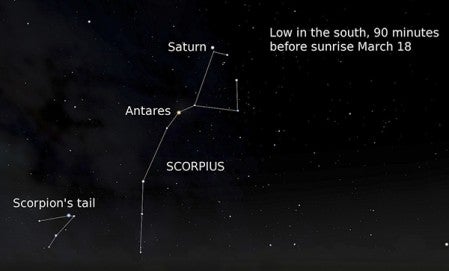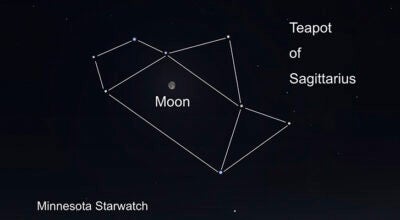Minnesota Star Watch: Planets show off
Published 3:01 am Sunday, March 1, 2015
 By Deane Morrison
By Deane Morrison
University of Minnesota
After a long winter, March makes up for it with the spring equinox and planet shows in both the morning and evening skies.
The month opens with Venus blazing away as a brilliant evening “star” in the west. On the 4th, grab your binoculars an hour or so after sundown and try to catch a rare glimpse of Uranus. This large, distant planet appears as a blue dot less than half a full moon’s width almost directly below Venus.
Mars lingers farther below Venus, but you may also need binoculars to see it, as it’s getting dim. Try on the 21st, when Mars and a hair-thin crescent moon form a reclining semicolon. The next night, the waxing crescent repeats the performance with Venus.
In the east and south, Jupiter outshines even Sirius, the brightest of stars. Following Jupiter across the sky are the stars of Leo, led by the backwards question mark called the Sickle, which outlines the lion’s head and is anchored by bright Regulus. Bringing up the rear is a triangle of stars marking the hindquarters and tail.
If you’re an early riser, don’t miss the chance to spot Saturn in the claws of Scorpius an hour or two before dawn. On the 12th, a waning moon dangles next to the ringed planet as it sits atop a line of starry claws facing Antares, the scorpion’s red heart. Viewing Saturn is best after the 17th or 18th, when no moon interferes.
March’s full worm moon, named for the reappearance of earthworms in the softening earth, shines the night of the 5th. This moon has also been called the sap moon, for the running of the maple sap beloved of pancake eaters everywhere. It’s the smallest full moon of 2015, thanks to falling on the same day that it reaches apogee, the farthest point from Earth in its monthly orbit.
The sun crosses the equator at 5:45 p.m. CDT on the 20th. This is the moment of the vernal equinox, when Earth is lighted from pole to pole and the northern spring begins. In the days around the spring equinox, the sun and its warmth also move most rapidly north, stirring up the famous March winds. We can also see this movement in the changes in day length. In March, we gain approximately three minutes of daylight per day, the maximum for the year.
On March 6, NASA’s Dawn spacecraft is due to rendezvous with Ceres, a dwarf planet like Pluto. Named for the Roman goddess of agriculture and fertility, Ceres also qualifies as the largest object orbiting in the asteroid belt between Mars and Jupiter. Ceres is round but only 590 miles in diameter, and it will play host to Dawn for several months. That means we can look forward to lots of information, including the first detailed images of a dwarf planet.
Daylight saving time returns at 2 a.m. on Sunday, the 8th. Clocks should be set one hour forward.
The University of Minnesota offers public viewings of the night sky at its Duluth and Twin Cities campuses. For more information and viewing schedules, see:
Duluth, Marshall W. Alworth Planetarium: www.d.umn.edu/planet
Twin Cities, Minnesota Institute for Astrophysics (during fall and spring semesters): www.astro.umn.edu/outreach/pubnight.
Check out the astronomy programs at the University of Minnesota’s Bell Museum ExploraDome: www.bellmuseum.umn.edu/ForGroups/ExploraDome/index.htm.
Contact: Deane Morrison, University Relations, (612) 624-2346,morri029@umn.edu. Find U of M astronomers and links to the world of astronomy athttp://www.astro.umn.edu.



